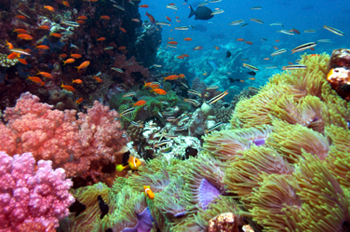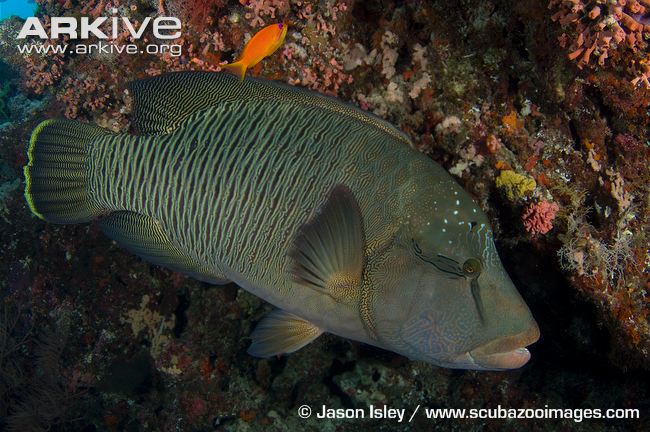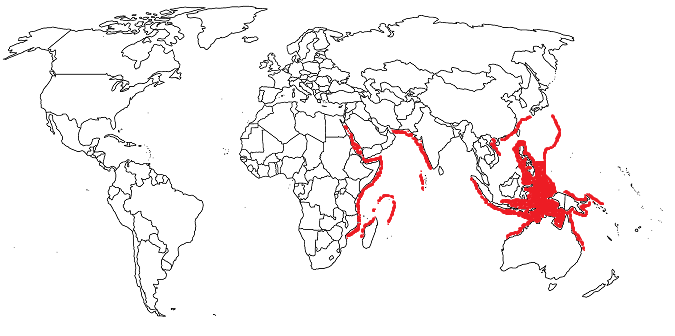Habitat
LOCATION:
There are many regions in the world where the Napoleon
Wrasse may be found, but they are prominently found
throughout coral reefs from the Indian Ocean to the
Pacific Ocean, with abundance near Queensland, Australia
(Encyclopedia Of Life 2013). These fish are the
largest of their kind and can specifically be found in the Red
Sea, near southern Japan, New Caledonia, the southern coast
of China, the African coast, and near Guam (Colin 2009). Typically, these massive fish are found at depths no
greater than 100m and most of the time they will migrate
to deeper waters as they age and become larger (SCRFA
2013).
The Napoleon Wrasse associates itself with other
organisms in its
habitat. A species of sea grass, four different
kinds of hard coral, and one type of soft coral was
found in the territory of these fish (IUCN 2004).
Both adult and juvenile fish generally reside in areas
with a sea grass floor. The only difference
between their habitats would be that younger fish
tend to occupy the inner parts of the reef while the
adult fish are found near the outer parts of the reef or in deeper waters (IUCN 2004). If other
organisms such as crustaceans, mollusks, fish, or
echinoderms
 are seen within their habitat, they will
most likely be preyed upon (Shedd 2006).
are seen within their habitat, they will
most likely be preyed upon (Shedd 2006).
LIFE STYLE:
These large fish tend to live alone or in pairs
throughout the many different coral reefs.
Sometimes the Napoleon Wrasse will be seen in schools
containing one male, two to seven other adults, and many
juvenile fish. It spends most of
its days swimming
throughout the reefs and during the night time they rest
in caves or on coral, rarely occupying their true home
(Bester 2013).
DISTRIBUTION:
Below is a map displaying the distribution of the Napoleon Wrasses
throughout the world. The red markings indicate where the
Napoleon Wrasse is found. To learn more about other organisms that
live in the Great Barrier Reef,
click here.

This map was created by Madison Geliche with the use of a map
template. Click
here to view the blank map without the distribution of the
Napoleon Wrasse.
Continue to
Form and Function to examine the morphology in further detail.
Check out some incredible underwater photography at
scubazoo.com!
Check out our
References!
Back to
Homepage